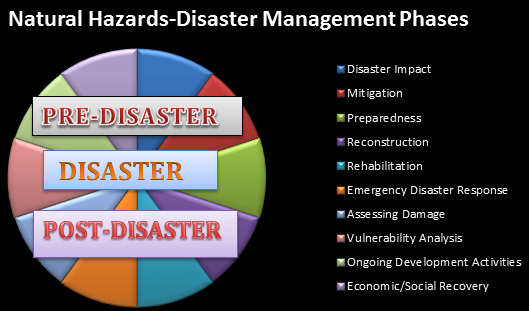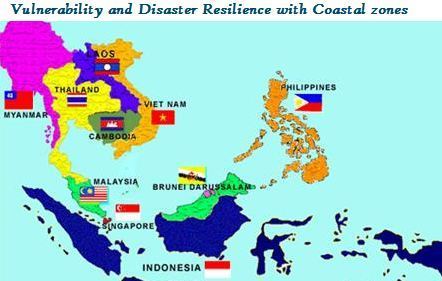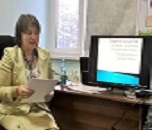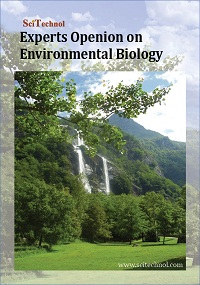Theme: Significance of Early Warning Systems and Risk Management Strategies
Natural Hazards Congress 2019
The Conference Series invites you to attend the 3rd International Conference on Natural Hazards and Disaster Management held during October 23-24, 2019 at Tokyo,Japan with the theme “Significance of Early Warning Systems and Risk Management Strategies”. Natural Hazards Congress-2019 has been outlined in an interdisciplinary way with foster discussion by maximizing interactions, collaborations and networking opportunities for Invited speakers, researchers and scientists mainly emphasis on large-scale research approaches and technologies in the sessional tracks to provides with a unique opportunity to get together at our 2-Days scientific program.
Natural Hazards Congress 2019 is an expertise meeting that spotlights and explore knowledge in the field of Environmental science and Engineering. We trust that you will exploit this opportunity and join with us at this remarkable occasion. It is an extraordinary approach to construct associations with partners and share knowledge and experience with their colleagues around the globe. The key point of Natural Hazards Congress-2019 is to discuss the research, advanced techniques and emerging strategies in the fields of Natural Hazards and Disaster Management and related Environmental concerns. In addition, you'll have the chance to associate with companions and celebrate your profession at this 2-Days event.
Why to attend?
The Significance of Emerging technologies and Strategies, improvements, and the most current updates in Natural Hazards and Disaster Management are hallmarks of this Conference.
This is your best chance to achieve the biggest gathering of members from the Environment science group. Lead introductions, disseminate data, meet with present and potential specialists, make a splash with new improvements, and get name acknowledgment at this 2-day occasion. Natural Hazards Congress-2019 makes you move, learn and embrace better approaches to enhance patient care.
Target Audience:
- Geo-technical specialists
- Earthquake engineers/ Seismist
- Volcanologist
- Urban planners, Hydro geologists
- Landslide geologists and engineers
- Climatology Experts
- Emergency Disaster volunteers
- Construction Management and Building Resilience Researchers
- Emergency Disaster and Safety Officers
- Environmental and Natural science Researchers, Faculty and Students
- Environmental Hazards and Disaster prevention Associations, Societies and Government agencies
- Business experts /suppliers/Research development teams in Natural Hazards and Disaster Management.
Join us for a symphony of outstanding science, and enjoy the spectacular and unique beauty of Tokyo,Japan
Conference Series invites all the scholars, researchers from all over the world to attend and present their respective scientific research at “3rd International Conference on Natural Hazards and Disaster Management” held during October 23-24, 2019 at Tokyo,Japan which includes Keynote presentations, Oral talks, Poster presentations, Young research forums,e-posters,and Exhibitions.
Natural Hazards Congress 2019 is organized with the theme “Significance of Early warning systems and Risk Management Strategies”
Natural Hazards Congress 2019 is a global platform to discuss and learn about factors, causes and consequences of Natural hazards ,Disaster Risk Reduction strategies and its associated fields of Geosciences, Coastal Geography, Geographic Information & Remote sensing, Alarming alerts and Early warning systems, Floodway Analysis, Disaster risk Management. At present, the current scenario of the Natural Hazards and Disaster Management is at alarming levels in the fields of Natural Hazards, Disaster Management and Environmental sciences. The present studies and research trend is of particular significance because most of it is very likely natural occurrence, human induced and proceeding at a rate that is unprecedented rates. Research on disaster and its reduction management policies, other technological advances have enabled scientists to collect different types of information about its origin, causes, vulnerability , Resilience, Public awareness on a global scale.
Why to attend?
People from around the world are looking forward to build an Eco-friendly and environmentally sustainable building, designed, constructed and operated to minimise the total environmental impacts. It provides a premier technical forum for reporting and learning about the latest research and development, as well as for launching new applications and technologies and the effectiveness of various regulatory programs towards Natural Hazards and Disaster Management. World-renowned speakers, scientists, researchers with the most recent techniques, developments, and the newest updates in Natural Hazards & Disaster Management are hallmarks of this conference. So we take an initiation to gather researchers from around the world at a single stage to discuss the Environmental concerns, causes, parameters, Risk assessment , vulnerability , Resilience, Public awareness on the Natural Hazards and Disaster Management and strategy to reduce the loss affected by Natural Hazards for the environmental sustainability . We assure 3rd International Conference on Natural Hazards and Disaster Management is going to build a new enthusiasm among the people on importance of Environmental Hazardous Risk Management strategies.
Summary:
It was essential that we look at Disaster Management, Natural Hazards from the development angle. Despite the fact that disaster policies is apparent that proper mechanisms for Disaster awareness and means of disaster recovery are essential. It targets on integrating the principles of sustainable development into national policies and programs, and reversing the loss of environmental resources can never be achieved without giving due emphasis to effective disaster management strategies. It points out, there is a need for disaster and risk reduction to be an essential part of the broader concerns of sustainable development and hence the need to make sure that risk assessments and vulnerability reduction measures are taken into account in different fields, such as environmental management, poverty reduction and financial management.
Track 1 Geosciences
Geosciences is the science that deals with origin, Structure,evolution, composition and behavior of Earth's landscapes, places and environments. It includes the studies of assessing environmental studies, spacial studies and satellite events. it's Associate in Nursing bailiwick involved with the sensible application of the principles of earth science within the determination of environmental issues. It includes Hydrogeology, Environmental geology, Hydro chemical science, Soil Mechanics. the basics ideas of environmental earth science ar Human growth, property, Earth as a system, risky earth processes that involves earth science hazards, natural resources, and topical problems with concern to society like temperature change and provides sound recommendation concerning however humanity will live responsibly and sustainably on Earth. Environmental earth science applies earth science info to the answer, prediction and study of earth science issues like Earth materials, Natural hazards, Landscape analysis, Environmental impact analysis and remedy. Forces among the planet produce mountain ranges and ocean basins and drive the movements of continents. Wind, water and ice shapes the surface of the planet, creating and dynamical the landscapes.
Track 2 Coastal Geography
Coastal Geography is that the study of the dynamic interface between the ocean and also the land, incorporating each the physiography (i.e. coastal morphology, earth science and oceanography) and also the human earth scienceof the coast. The Coastal Geography involves an understanding of coastal weathering processes, significantly wave action, weather, wave action and sediment movement and longshore drift, Sealevel changes(eustatic change), Land level changes (isostatic change),Coastal landforms.
Track 3 Geological disasters and Earthquakes
Geological disasters and Earthquakes event occured because of topographical unsettling influences frequently brought about by movements in structural plates and seismic action. Seismology is the examination of tremors and seismic waves which were realized by the sudden breaking of shake inside the earth or an impact. They are the vitality that movements through the earth and is recorded on seismographs. GIS manages the impact of Earthquakes and diverse calamities by looking over peril and hazard territories in association with masses, property, and trademark resources, Integrating data and enabling understanding of the degree of an emergency to manage a scene and perceiving organizing zone zones, operational branches and divisions, and other basic event the administrators needs. Paleo-seismology, Volcano seismology and infrasound, Tsunamis, Glacier seismicity, Tectonic misshapening, Seismotectonics were the realted fields to inspect the intensity of emergency status towards land disasters.
Track 4 Meteorological Hazards
Meteorological Hazards are risks brought about by outrageous climate like downpour, dry spell, snow, extraordinary warmth or cold, ice, or wind. Brutal ,sudden and to ruinous harm the earth influencing the world's climate , particularly the climate shaping procedures.
Track 5 Health disasters and Epidemics
The connection between Health disasters and Epidemics is much of the time confused. The accessibility of safe water and sanitation offices, the level of swarming, the basic wellbeing status of the populace, and the accessibility of medicinal services benefits all cooperate inside the setting of the nearby sickness environment to impact the hazard for transferable illnesses and passing in the influenced populace. Hazard Factors for Communicable Disease Transmission, Communicable Diseases Associated with Natural Disasters(Water-related Communicable Diseases, Diseases Associated with Crowding,,Vectorborne Diseases).
Track 6 Space Disasters
Space Disasters is characterized as man-made or common hurtful conditions. Unsafe conditions which cause demise, damage, disease, harm to or loss of frameworks, offices, hardware or property, harm to the earth. For unmanned frameworks, for example, mechanical satellites, harms due to non-malignant outer causes that converts into corruption or loss of mission. For instance undesirable crash of a satellite with another satellite, or with space flotsam and jetsam. It incorporates non-deliberate in nature (plan blunders, glitches, human mistakes, and so on.), security alludes to dangers which are willful (for example of forceful nature, for example, utilization of hostile to satellite weapons)
Track 7 Environmental Pollution
Environmental Pollution is the presentation of contaminants into the condition that makes unsafe and harmful impacts living things. Sullying can show up as invention substances or essentialness, for instance, uproar, warmth or light. Environmental Effects contains five fundamental sorts of sullying air, water, soil, uproar and light. Ecological contamination is the pollution of the physical and natural segments of the earth to such a degree, that ordinary natural procedures are antagonistically influenced.
Track 8 Climate Change
Climate Change is an adjustment in the factual appropriation of climate designs that change goes on for an all-inclusive timeframe. It is a long haul peril which can build the hazard alleviation of other climate risks, because of ocean level ascent prompts living space pulverization. Climate Change results can increment in worldwide temperatures incorporate expanded danger of dry spell and expanded power of tempests . The outrageous climate occasions in charge of catastrophic events include: Extreme temperature, high warmth waves and Storms including windstorms, typhoons, elevated amounts of precipitation and related flooding, related dry spell.
Track 9 Global Warming
Global Warming is a dangerous atmospheric devation is the characterized as continuous increment in the normal temperature of the Earth's environment because of progress in the Earth's atmosphere. The expanded volumes of carbon dioxide and other ozone harming substances discharged by the copying of petroleum derivatives, land clearing, horticulture, and other human exercises, are accepted to be the essential wellsprings of the an unnatural weather change. Changes coming about because of an unnatural weather change may incorporate rising ocean levels because of the liquefying of the polar ice tops, increment in event and seriousness of tempests and other extreme climate occasions prompting characteristic catastrophes and calamities.
Track 10 Ecosystems and Biodiversity
Ecosystems and Biodiversity is a universal activity to attract consideration regarding the worldwide financial advantages of biodiversity. Its goal is to feature the developing expense of biodiversity misfortune and environment corruption and to draw together aptitude from the fields of science, financial matters and approach to empower functional activities. The report gave proof to critical worldwide and nearby monetary misfortunes and human welfare impacts because of the progressing misfortunes of biodiversity and debasement of biological communities.
Track 11 Geographic Information & Remote sensing
Geographic Information & Remote sensing makes to accumulate data on risky or distant zones. We can screen deforestation in regions, for instance, the amazon Basin, chilly highlights in Arctic and Antarctic territories, and profundity sounding of waterfront and ocean profundities. Remote sensors accumulate data by finding the imperativeness that is reflected from Earth. These sensors may be on satellites or mounted on aircraft. Remote sensors may be either inactive or dynamic. Detached sensors respond to outside shocks. They record the radiation that is reflected from Earth's surface. It tends to Radio meters, Photo meters, RADAR, LIDAR, Hyper creepy imaging. Space tests to different planets have additionally permitted to organize remote perceiving considers in extraterrestrial conditions, structured gap radar.
Track 12 Alarming Alerts and Early Warning Systems
The course of action of limits expected to convey and disseminate supportive and gigantic admonishing data to draw in people, frameworks and affiliations undermined by a peril to get ready and to act fittingly and in adequate time to lessen the likelihood of mischief or hardship. A tremor admonishing framework is a game-plan of accelerometers, seismometers, correspondence, PCs, and alerts that is concocted for territorial forewarning of a liberal shiver while it is in movement.
Track 13 Floodway Analysis
Floodway Analysis is a Regulatory Floodway implies the channel of a stream or other waterway and the adjoining land zones that must be held so as to release the base flood without aggregately expanding the water surface rise more than an assigned stature is a flimsy stream demonstrate that has been utilized for National Flood Insurance Program (NFIP) purposes. Stream programs decides floodways consequently to represent the loss of floodplain stockpiling and transport. Stream model to process the water-surface rises for the floodway examination to represent the loss of floodplain stockpiling.
Track 14 Disaster Risk Management
Disaster Risk Management is the idea and routine with regards to diminishing debacle chances through orderly endeavors to break down and lessen the effects and factors of fiascos. Diminishing presentation to dangers, decreasing weakness of individuals and property savvy the board of land and nature, and improving readiness and early cautioning for unfriendly occasions are on the whole instances of calamity chance decrease. Catastrophe Risk Reduction (DRR) plans to diminish the harm brought about by characteristic perils like seismic tremors, floods, dry spells and tornados, through an ethic of aversion. The legislatures, offices, associations, organizations and common society comprehend hazard and defenselessness, the better prepared they will be to alleviate catastrophe.
- Disaster investigation
- Disaster observing and relief
- Emergency readiness
- Risk relief and security
- Community strength
- Socio-monetary issues
- Health hazard and calamity brain science
- Case examines
- Human factors
- Multi-peril chance appraisal
- Risk interchanges
- Preparedness and preparing
- Learning from fiascos and man-made calamities
Related Natural Hazards Conferences | Disaster Management Conferences | Environmental Conferences | Climate Change Conferences
2nd Annual Congress on Environmental Pollution and Health Hazards October 22-23, 2018 Osaka, Japan; 9thWorld Convention on Waste Recycling and Reuse March 19-20,2019 Singapore; 6th World Congress on Climate Change & Global Warming April 23-24,2019 Vancouver, Canada; 4th International Conference on Coastal Zones & Ocean Science May 15-16, 2019 Tokyo, Japan; 21st International Conference on Natural Hazards and Geospatial Technology January 7 - 8, 2019, Tokyo, Japan ; International Conference on Flood Risk Management and Water Pollution March 08 – 09, 2019 Taipei, Taiwan; National Hurricane Conference April 22-25, 2019 New Orleans,USA; International Conference on Global Warming and Climate Change October 4-5, 2018 Bangkok, Thailand
Confederation of European Environmental Engineering Societies, International Network for Sustainable Energy, Ecological Society of America , Environmental Health and Safety Management System, International federation on Environmental Studies.
Summary of Natural Hazards and Disaster Management conference
Annually Natural Disasters continue to strike and increase in magnitude, complexity, frequency and economic impact. At the same time, awareness of the process and potential benefits of disaster reduction is still confined to specialized circles, and has not yet been adequately communicated to policy makers and the general public. Natural Hazards and Disaster Management is playing an important role to create awareness and providing a platform to share and discuss on different types of Natural Hazards, Significance of Early warning systems and Risk Management strategies. World is looking for Reducing exposure to hazards, lessening vulnerability and property wise management, improving preparedness and early warning for adverse events by disaster risk reduction. Calling for development of a "global culture of prevention" and improved risk assessment, broader monitoring and communication of warnings, the Conference adopted the Natural Hazards and Disaster Management: Guidelines for Natural Disaster Prevention, Preparedness and Mitigation and we are organizing the series of Natural Hazards & Disaster Management conferences.
Scope and Importance
Natural Disasters and Disasters, whether they occur in advanced or developing nations, can destroy people's livelihoods. Extreme natural and man-made hazards have recently hit both developed and developing countries. While the Asian countries have been successful in achieving economic growth and poverty reduction, the region cannot avoid exposure to a variety of disasters. Indeed, Asia, particularly the area of the ASEAN Member States (AMSs), is the most prone region to disasters in the world. Natural Disasters pose negative effects on social structures, environment by disrupting the flows of goods and services, worsening the balance of payments and government budgets, derailing economic growth, income distribution, and poverty reduction. The current scientific sessions notify the mitigate damage arising from disasters, both in terms of the number of human casualties and economic impacts, and preparedness, importance of advance preparations, drawing up emergency plans, disseminating and training emergency knowledge, conducting evacuation drills, constructing early warning systems, and investing in infrastructure and reconstruction efforts, capacity building programs for disaster preparedness, emergency response, relief
Population growth and rapid urbanization could put 1.3 billion people and more than $150 trillion in assets at risk from river and coastal floods by 2020, with Asia as the most exposed region. Natural Hazards congress 2019 is a timely scientific conference that will address the concerns and issue for environmental sustainability in the ASEAN-5 (Singapore, Indonesia, Thailand, the Philippines and Malaysia) Vietnam countries due to national disasters (economic crisis, health hazards, natural calamity and/or Man made hazards). Singapore is well-shielded from natural calamities like earthquakes, typhoons and tsunamis. Natural Hazards Congress-2019 will provide a forum for discussion of the integration of Hazard information into effective emergency risk management. Applying science, technology and research information to best practice planning, warning, response and recovery capabilities will lower the impact of Disasters on environment. The conference will bring together expertise from international wide to enable the sharing of knowledge and strengthen technical sessions. The subject specific target audience of the conference is: emergency managers, planners, risk assessors, asset and utility managers, natural hazards researchers and scientists, experts on the environmental concerns, Delegate participations.
Target audience The scope of the meeting is to brought Experts, Geologists, Ecologists, Professors, Geotechnical Engineers, Geo Scientists, students, researchers, Consultants, business experts across the globe and to evaluate the consequences of human-driven disruption of natural system with a theme of “Significance of Early warning systems and risk management strategies "

Why in Japan?
Japan has emerged as a global city and business hub of the Asia pacific countries and has special concern on Natural Hazards & Disaster Management. Each year, various parts of Japan are inundated by a series of floods, usually in the form of flash floods that came about due to intense rainfall over a short period of time, droughts, heat waves, hailstorms, wildfires , Waterspouts, affected by the Severe acute respiratory syndrome, flu pandemic and other medical epidemics. Natural Hazards Congress 2019 aim at providing strengthened disaster management, insight research literature in different approaches towards effective disaster risk coping strategy and regional cooperation on disaster management.

Comparative studies of Natural Disasters In Asian countries
Asia is the most disaster-prone region in the world. The region has borne brunt of the physical and economic damages of natural disasters. With reference to the data collected by the Centre for Research on the Epidemiology of Disasters (CRED), human toll from natural disasters in the last 5 years has been staggering. The region remains exposed to more natural disasters and according to the Asian Development Bank, the region’s economic progress will be undermined by the rising number of floods, landslides and other disasters. That provides a stark reminder that Asia’s many densely populated and expanding coastal cities will in particular remain vulnerable to weather-related disasters. Floods, earthquakes and cyclones have wreaked havoc across ASEAN countries killing people, wiping out homes, livelihoods and leaving economies in distress. The region occupies 30% of the world's land mass, but 40% of the world's disasters occurred in the region in the past decade, resulting in a disproportionate 80% of the world's disaster deaths. During the last 10 years, according to the Centre for Research on the Epidemiology of Disasters, majority of deaths in Asia were caused by earthquakes, Floods have killed 17,442 people while as cyclones were responsible for 13,368 deaths in the region. Asia lost US$15 billion due to natural disasters, according to data released by the Center for Research on the Epidemiology of Disasters (CRED)
Desertification Vulnerability
About 40% of the earth’s land area is threatened by desertification, land degradation in which fertile land transforms into desert. According to the UN Convention to Combat Desertification it is estimated that every year about 12 million hectares of fertile land is turning into desert which is aggravated due to climate change and human activities and it is estimated that by 2030, water scarcity in some places will displace up to 700 million people, remains most vulnerable to desertification.


Summary of Natural Hazards and Disaster Management conference
Annually Natural Disasters continue to strike and increase in magnitude, complexity, frequency and economic impact. At the same time, awareness of the process and potential benefits of disaster reduction is still confined to specialized circles, and has not yet been adequately communicated to policy makers and the general public. Natural Hazards and Disaster Management is playing an important role to create awareness and providing a platform to share and discuss on different types of Natural Hazards, Significance of Early warning systems and Risk Management strategies. World is looking for Reducing exposure to hazards, lessening vulnerability and property wise management, improving preparedness and early warning for adverse events by disaster risk reduction. Calling for development of a "global culture of prevention" and improved risk assessment, broader monitoring and communication of warnings, the Conference adopted the Natural Hazards and Disaster Management: Guidelines for Natural Disaster Prevention, Preparedness and Mitigation and we are organizing the series of Natural Hazards & Disaster Management conferences.
Scope and Importance
Natural Hazards and Disasters, whether they occur in advanced or developing nations, can destroy people's livelihoods. Extreme natural and man-made hazards have recently hit both developed and developing countries. While the Asian countries have been successful in achieving economic growth and poverty reduction, the region cannot avoid exposure to a variety of disasters. Indeed, Asia, particularly the area of the ASEAN Member States (AMSs), is the most prone region to disasters in the world. Natural Disasters pose negative effects on social structures, environment by disrupting the flows of goods and services, worsening the balance of payments and government budgets, derailing economic growth, income distribution, and poverty reduction. The current scientific sessions notify the mitigate damage arising from disasters, both in terms of the number of human casualties and economic impacts, and preparedness, importance of advance preparations, drawing up emergency plans, disseminating and training emergency knowledge, conducting evacuation drills, constructing early warning systems, and investing in infrastructure and reconstruction efforts, capacity building programs for disaster preparedness, emergency response, relief
Population growth and rapid urbanization could put 1.3 billion people and more than $150 trillion in assets at risk from river and coastal floods by 2020, with Asia as the most exposed region. Natural Hazards congress 2019 is a timely scientific conference that will address the concerns and issue for environmental sustainability in the ASEAN-5 (Singapore, Indonesia, Thailand, the Philippines and Malaysia) Vietnam countries due to national disasters (economic crisis, health hazards, natural calamity and/or Man made hazards). Singapore is well-shielded from natural calamities like earthquakes, typhoons and tsunamis. Natural Hazards Congress-2019 will provide a forum for discussion of the integration of Hazard information into effective emergency risk management. Applying science, technology and research information to best practice planning, warning, response and recovery capabilities will lower the impact of Disasters on environment. The conference will bring together expertise from international wide to enable the sharing of knowledge and strengthen technical sessions. The subject specific target audience of the conference is: emergency managers, planners, risk assessors, asset and utility managers, natural hazards researchers and scientists, experts on the environmental concerns, Delegate participations.
Target audience The scope of the meeting is to brought Experts, Geologists, Ecologists, Professors, Geotechnical Engineers, Geo Scientists, students, researchers, Consultants, business experts across the globe and to evaluate the consequences of human-driven disruption of natural system with a theme of “Significance of Early warning systems and risk management strategies "

Why in Japan?
Japan has emerged as a global city and business hub of the Asia pacific countries and has special concern on Natural Hazards & Disaster Management. Each year, various parts of Japan are inundated by a series of floods, usually in the form of flash floods that came about due to intense rainfall over a short period of time, droughts, heat waves, hailstorms, wildfires , Waterspouts, affected by the Severe acute respiratory syndrome, flu pandemic and other medical epidemics. Natural Hazards Congress 2019 aim at providing strengthened disaster management, insight research literature in different approaches towards effective disaster risk coping strategy and regional cooperation on disaster management.

Comparative studies of Natural Disasters In Asian countries
Asia is the most disaster-prone region in the world. The region has borne brunt of the physical and economic damages of natural disasters. With reference to the data collected by the Centre for Research on the Epidemiology of Disasters (CRED), human toll from natural disasters in the last 5 years has been staggering. The region remains exposed to more natural disasters and according to the Asian Development Bank, the region’s economic progress will be undermined by the rising number of floods, landslides and other disasters. That provides a stark reminder that Asia’s many densely populated and expanding coastal cities will in particular remain vulnerable to weather-related disasters. Floods, earthquakes and cyclones have wreaked havoc across ASEAN countries killing people, wiping out homes, livelihoods and leaving economies in distress. The region occupies 30% of the world's land mass, but 40% of the world's disasters occurred in the region in the past decade, resulting in a disproportionate 80% of the world's disaster deaths. During the last 10 years, according to the Centre for Research on the Epidemiology of Disasters, majority of deaths in Asia were caused by earthquakes, Floods have killed 17,442 people while as cyclones were responsible for 13,368 deaths in the region. Asia lost US$15 billion due to natural disasters, according to data released by the Center for Research on the Epidemiology of Disasters (CRED)
Desertification Vulnerability
About 40% of the earth’s land area is threatened by desertification, land degradation in which fertile land transforms into desert. According to the UN Convention to Combat Desertification it is estimated that every year about 12 million hectares of fertile land is turning into desert which is aggravated due to climate change and human activities and it is estimated that by 2030, water scarcity in some places will displace up to 700 million people, remains most vulnerable to desertification.


Conference Highlights
- Geosciences
- Coastal Geography
- Geological disasters and Earthquakes
- Meteorological disasters
- Health Disasters & Epidemics
- Space Disasters
- Environmental Pollution
- Climate Change
- Global Warming
- Ecosystems and Biodiversity
- GIS & Remote sensing
- Alarming alerts and warning systems
- Floodway Analysis
- Disaster Risk Management
To share your views and research, please click here to register for the Conference.
To Collaborate Scientific Professionals around the World
| Conference Date | October 23-24, 2019 | ||
| Sponsors & Exhibitors |
|
||
| Speaker Opportunity Closed | Day 1 | ||
| Poster Opportunity Closed | Click Here to View | ||
Useful Links
Special Issues
All accepted abstracts will be published in respective Our International Journals.
- Journal of Earth Science & Climatic Change
- Geoinformatics & Geostatistics: An Overview
- Expert Opinion on Environmental Biology
Abstracts will be provided with Digital Object Identifier by














